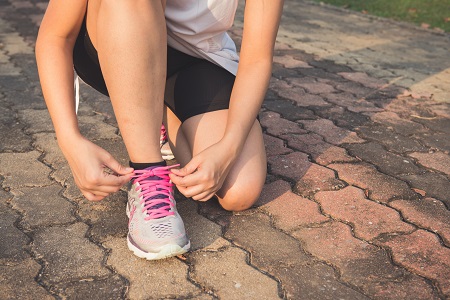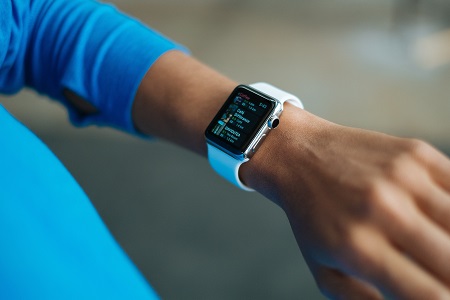Contents
Is walking an exercise? Yes, it is. Specific training and walking can help to maintain and improve your health.
Instead of a vigorous workout or long exercise period, just walk for 30 minutes daily. Walking will improve your fitness level significantly. It can be done at your preferred time and pace and without any type of equipment. It is a perfect way to exercise for people who are elderly, have not exercised for a long time, or are overweight. You can just get out of your front door and start your exercise.
Health benefits of walking exercise
- Walking exercise increases your heart and lung fitness
- It reduces the risk of stroke and heart disease
- Walking improves conditions such as hypertension, high blood pressure, high cholesterol, joint and muscular pain, and diabetes
- It improves balance
- Walking increases muscle strength and endurance
- It reduces body fat.
- Reduces stress, anxiety and depression.
- Helps to sleep better at night.
Techniques for Walking exercise
Using the below-mentioned techniques will help improve the benefits of walking exercises:
You need to maintain a good form while walking. This will give you optimum aerobic benefit with each step. It will also help protect the back and avoid any injury.
- Feet: Your need to remember that your step should land on the heel and midfoot and push forward with the toes.
- Hips: Your forward motion should start with your hips. Every step must be natural, neither too long nor too short.
- Head and shoulders: You need to keep your head up and centred between the shoulders. Your eyes should be focused straight ahead, at the horizon. The shoulders need to be relaxed but straight.
- Arms and hands: Your arms should be close to the body. The elbows must be bent at a 90-degree angle. During the walk, the arms should keep in motion, swinging front to back in pace with the steps of the opposite leg. Keep your hands relaxed, lightly cupped with the palms inward.
- Abdominal muscles: you need to use the abdominal muscles to help support the body’s trunk and the spine. Therefore, keep your stomach pulled in slightly and stand fully upright.
Make Walking a part of your routine.
In the beginning, you might find walking for 30 minutes in one session hard. In that case, start with less time, like 10-15 minutes a day and then gradually increase the timing. Make it part of your daily task, and in no time, you will perform well. You can also you a pedometer (smart band/smartwatch) to measure the number of steps. You can use it to compare your activities of the previous days. This is one way to motivate yourself and keep pushing yourself to excel. As the guidelines recommended, 10,000 steps per day are needed to achieve health benefits. We will discuss the 10000 steps per day issue at the end of the article.
How to get started?

To start, the first thing you will need is willpower. To continue exercise, one needs to feel the urge from inside. In the beginning, choose a area near your home. You can look for a beautiful place such as a garden, a trail or a beach per availability or access. You also need a pair of good shoes.
Even you can ask your friend or family member to join you, or if not, why not make some new friends in your new route? Whatever you do, you need to add walking into your daily routine.
A comfortable intensity
Initially, plan to walk a fixed distance each day and check how long it takes to cover the distance. With time your fitness will improve, and you can walk a longer distance. Brisk walk burns more calories per hour than strolling. The focus should be on a comfortable intensity, which will provide your health benefit.
Once your body is used to the current level of walking, then only increase the intensity to improve your fitness level.
The intensity of your walks could be increased by the following measures:
Warm-up and cool down after exercise.
Walk for a longer duration.
Increasing speed gradually by including brisk walk for a few minutes.
Increasing the distance, walk at a fast pace before returning to a moderate pace.
Walk up hills.
Walk with weights.
The Best way to warm up
The best way to warm up is to start the walk slowly. Walking at a leisurely pace gives your muscles time to warm up. You can, after that, pick up the speed. Stretch your leg muscles like your calves and front and back thighs. Each stretching exercise should be held for 20 seconds approximately. Do not overstretch your muscle tissue. It may cause microscopic tears leading to muscle stiffness and tenderness. Gentle stretching must prepare the joints and muscles before going for a brisk walk. Always discuss with healthcare professionals the best ways to stretch, including the neck, arms, hips, upper and lower leg muscles, and ankles.
Dress code for Walking exercise
Always dress in loose clothes when you go for a walk. A flexible and comfortable dress should be your dress code. You don’t want to increase sweating and build up your body temperature. This will cause significant discomfort while walking. Just like a warm-up, a gradual cool-down is also needed. It will prevent muscular stiffness and injury.
Footwear for exercise

Walking involves almost no cost, and it is a very effective exercise. But just like the dress, you need to select a good pair of shoes. The wrong type of shoe causes foot or shin pain, blisters etc. Do not go for overpriced shoes or brands but make sure your shoes are comfortable and have the right heel and arch supports. Always try to walk on grass rather than concrete to reduce the impact.
Walk for 30 minutes a day
Every day, try to walk for at least 30 minutes. A brisk walk is preferable to a casual walk. ‘Brisk walk’ means you will be able to talk but not during a walk.
If you find it difficult to walk for 30 minutes at one time, then walk for 10 minutes three times per day. With time you can build up strength for longer sessions.
But if your true goal is to lose weight, you must walk longer than 30 minutes daily.
Wearing a pedometer
The pedometer counts your steps. You can also use a smartphone app such as Samsung Health or Google fit if you don’t want to invest in a pedometer. These apps or pedometer measures your step counts throughout the day. They also compare it to other days or to recommended amounts. This will, in turn, motivate you to walk more. It is recommended to walk 10,000 steps or more to get health benefits.
Listening to Music
Listening to music while you walk. It can relax your mind and take your mind off the effort. It can get you into a rhythm and help you walk at a fast pace.
Music is a great way to uplift your mood. It helps you with brisk or fast-paced walk, especially for intense fitness. Generally, runners prefer fast beats, while walkers prefer a bit slower music. Different genres of music can work for different people. Some prefer fast music for intense exercise. In contrast, others may choose slower songs to maintain a steady pace for long-distance walks. Fast or high-tempo energetic songs could give you motivational boosts if you start feeling low on energy.
DO REMEMBER wearing headphones while walking in the street can be a fatal distraction. Therefore, choose to listen to music only when you are in a park or walking in a designated area for walkers, joggers etc.
Use a Treadmill for walking Exercise
You can also use the treadmill to exercise walking if you don’t get much time to go outside or the weather does not support it. Walking on a treadmill allows you to walk anytime. On a treadmill, you can control the pace and the inclination. You can also control the time spent on your treadmill. You can increase your speed and incline depending on your fitness level.
Making walking a pleasure activity
Instead of thinking it an exercise, you can make walking a pleasure activity. Starting the exercise takes the initiative but sticking to it takes commitment. The below might help to motivate yourself.
- Change your activity area regularly. Pick different routes. Then you will not get tired of seeing the same sights every day.
- Walk at other times of the day. Walking in the morning is to be different from walking in the afternoon.
- You can also drive to different places and then start your activities. This way, the change in the scenario will be able to motivate you further.
- If you have a dog, take it for a walk. It will be lovely to have your pet around you.
- As previously suggested, you can work with your friends or family to make it more enjoyable. You can also join or start a walking club in your neighbourhood.
- If you start skipping your daily walks, remind yourself how good it felt to include walking activity in your daily routine and what were your goals and then get back on track.
Build walking exercise into your daily routine:
- Don’t take the lift; instead, use the stairs.
- If you use o prefer public transport, get off one or two stops earlier and walk to work or home earlier.
- Walk to the local shops or while running errands instead of taking your vehicle.
- Park a bit away than usual and then walk to and from your car.
- Walk your kids to school.
- Go for a stroll with family after dinner.
Tips for staying safe while walking exercise
To make sure you are walking safe, try to follow the below rules:
- Walk-in pedestrians’ areas only.
- Select well-lit areas.
- Wear good shoes with heel and arch support.
- Wear comfortable, light clothing.
- To stay hydrated, drink plenty of water before and after your walk.
- Wear sunscreen, sunglasses, long sleeves, and a hat to prevent sunburn.
- Get information on the weather forecast and take relevant safety measures.
- Always do warm-up and cool down before and after your walk.
- Choose to walk as per your fitness level only. Don’t overdo it.
- Before starting a new fitness regime, see your physician for a medical check-up. Also, if you feel uneasy during walk, you must see your doctor immediately.
Are you walking fast enough?
When you walk more than 4 km an hour, it is called a brisk walk. During a brisk walk, you can talk but can’t sing. You can check your pace on your smartphone apps or your pedometer (smart band/smart watch). They can tell you how fast you are doing and even suggest if some more speed walking is needed.
Walk 10,000 Steps every day?

Walking is a good exercise as it puts our large muscle groups to work. Most fitness tracking devices recommend taking 10000 steps a day. Instead of the recommendations of pedometers everywhere, no scientific research supports the goal of walking 10,000 steps a day for health gain or weight loss. The magic number of 10000 steps does not come from thorough research but from marketing, a gimmick started in Japan.
As per Dr I-Min Lee, a professor of epidemiology at the Harvard T.H. Chan School of Public Health, the 10,000-step target became popular in Japan in the 1960s. A clockmaker, Yamasa Tokei, wanted to capitalize on fitness after the 1964 Tokyo Olympic Games. The Manpo-Kei (translated as 10,000-steps meter) was invented by Yamasa Tokei, the producer of the first commercial, who chose the name because it sounded good. And as we know today, it worked!
This created a walking aim that decades became embedded in our global consciousness. We generally take about 4,000 steps a day while doing our everyday activities. If we can add an additional 2000 to 3000 steps, it will be a total of 6000 to 7000 steps a day. Moving more benefits your health, but it does not necessarily have to be 10000 steps. There is no magic number like 10000 steps.
It is essential to pick up the pace. The physical benefits you can gain from walking depend on the duration, intensity, and frequency. Simply put, walk more, walk fast, and walk for a more extended period. You should not get too fixated on the number of steps.
References
- Exercise: Starting a walking program. (n.d.). Berkeley.edu. Retrieved August 2, 2022, from https://uhs.berkeley.edu/health-topics/exercise-starting-walking-program
- Website, N. H. S. (n.d.). Walking for health. Nhs.uk. Retrieved August 2, 2022, from https://www.nhs.uk/live-well/exercise/running-and-aerobic-exercises/walking-for-health/
- Wikipedia contributors. (2022, July 6). Pedometer. Wikipedia, The Free Encyclopedia. https://en.wikipedia.org/w/index.php?title=Pedometer&oldid=1096768183
